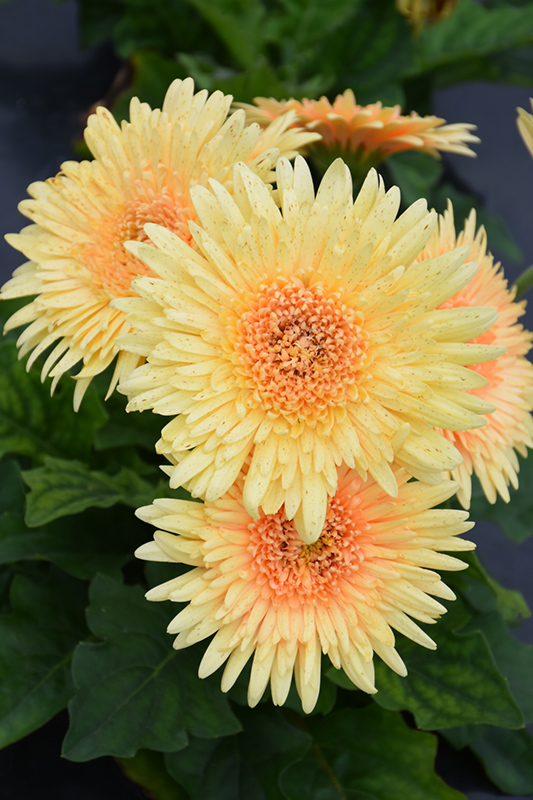Cartwheel® Chardonnay Gerbera Daisy
Description
This long blooming, vigorous variety, produces gorgeous, large semi-double blooms sitting on top of sea green foliage; cream colored flowers with touches of peach and pink adds interest to containers, borders, gardens and fresh cut flower arrangements
Landscape Attributes
Cartwheel® Chardonnay Gerbera Daisy is an herbaceous annual with an upright spreading habit of growth. Its medium texture blends into the garden, but can always be balanced by a couple of finer or coarser plants for an effective composition.
Cartwheel® Chardonnay Gerbera Daisy is recommended for the following landscape applications;
Planting & Growing
Cartwheel® Chardonnay Gerbera Daisy will grow to be about 16 inches tall at maturity, with a spread of 16 inches. When grown in masses or used as a bedding plant, individual plants should be spaced approximately 14 inches apart. Its foliage tends to remain dense right to the ground, not requiring facer plants in front. This fast-growing annual will normally live for one full growing season, needing replacement the following year.
This plant does best in full sun to partial shade. It does best in average to evenly moist conditions, but will not tolerate standing water. It is not particular as to soil type or pH. It is highly tolerant of urban pollution and will even thrive in inner city environments. This particular variety is an interspecific hybrid. It can be propagated by cuttings; however, as a cultivated variety, be aware that it may be subject to certain restrictions or prohibitions on propagation.
Cartwheel® Chardonnay Gerbera Daisy is a fine choice for the garden, but it is also a good selection for planting in outdoor containers and hanging baskets. It is often used as a 'filler' in the 'spiller-thriller-filler' container combination, providing a mass of flowers against which the larger thriller plants stand out. Note that when growing plants in outdoor containers and baskets, they may require more frequent waterings than they would in the yard or garden.

